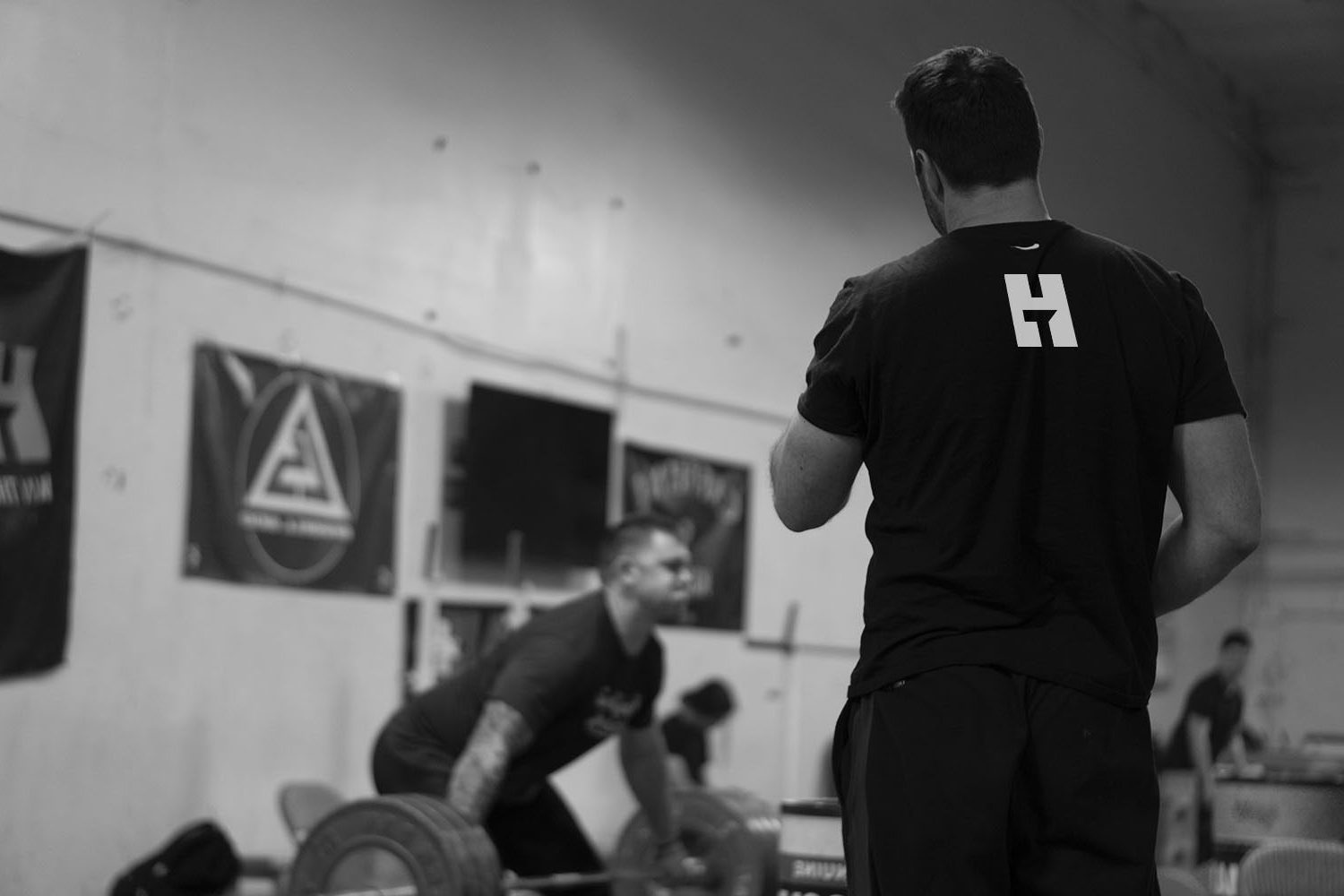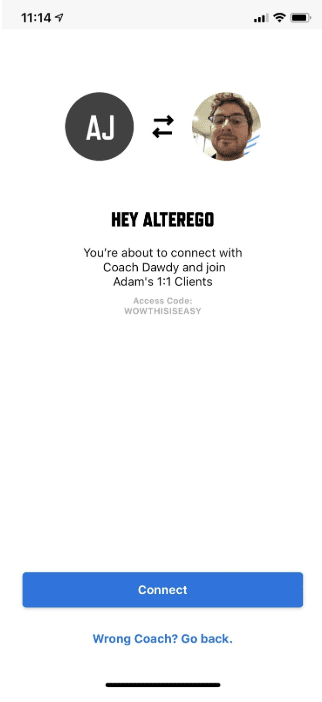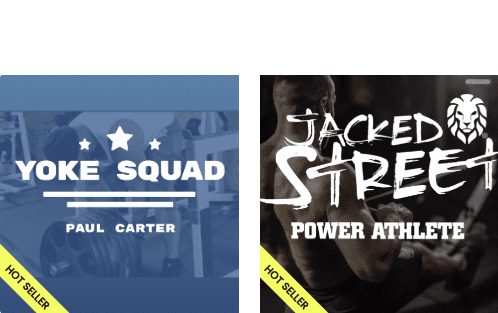Product Update: Mobile Athlete Onboarding
Coach Development | Product Updates | UncategorizedABOUT THE AUTHOR
10 min read

adam dawdy
Adam Dawdy is a Product Manager at TrainHeroic. Before that, he coached in various settings, taught, and studied biomechanics and exercise physiology. Adam is a converted endurance athlete who enjoys the pursuit of strength.
// Can coaches be replaced by AI?
Maybe. It depends on what “coaching” means to you.
In 1894, there were 100,000 horses in London. Horses are…well, cleaning up after thousands of them is a huge challenge. Things looked so bad that it was predicted, “In 50 years, every street in London will be buried under nine feet of manure.”
No one had any clue how to solve this problem.
20 years later the problem was virtually eliminated. What happened?
Machines happened. Trams, buses, and other motor vehicles took their jobs. Urban horses became unemployed and the horse population fell off by about 90% in the next 50 years. Do most people want to keep horses that don’t pay for themselves? Nay.
Jump to 2019. By some estimates, 25% or more of all human jobs are at high risk of being automated. That’s a scary thought.
Whoa. Pull in the reins. This also means that the majority of jobs are not in imminent danger. What makes them different?
Machines can already do repeatable, rote tasks pretty well. Amazon is increasingly relying on robots in its warehouses and self-driving vehicles will likely displace many truck drivers in the near future. And it’s not just physical labor. Jobs like data entry and accounting are susceptible to automation, too.
If the entirety of a job consists of tasks that can be written down or a set of rules to follow, a machine can probably be trained to do it. That’s what an algorithm is.
Without getting too far down the rabbit hole here, if you look at jobs that are at lower risk, they typically require a combination of expertise, fluid thinking, and intrinsically human skills like empathy.
This sounds like the crux of coaching, to me.

Probably not an actual picture of London in 1894, but you get the image….
// Coaching is inherently a human endeavor
In short, these jobs require…being human, and being human is not something that machines are particularly good at (knock on wood). Have you called an automated phone system lately? It’s not really a complex problem to solve, but they’re just not satisfying to deal with. We’d rather talk to a person.
For now, it’s not AI you have to worry about losing your athletes to. It’s not even other coaches trying to take them from you, or “programs” they find on the internet. In our survey, over 1,000 athletes told us about what types of things made them lose motivation and get lost on their training journey. These are the people who quit training or program hop.
By far, the top factors were:
- Stress in other areas of life
- They got off track and didn’t know how to get back on
- They didn’t feel they were making progress
This is where your attention, advice, and mentorship could have saved some of them from losing their way. You know how to address these issues, and you know the people in front of you. You can interact with them in human terms. This is where you have an advantage over technology.
// technology doesn’t have to be inhuman
All this serves to highlight a simple belief: if “being human” is critical to success in coaching, and you’re using technology to help with your coaching, we believe we need to be very attentive to the human elements that are so important to making you irreplaceable. This is what will give you an advantage.
Instead of creating cold chasms, technology should transmit warmth and connection. There should be humanity.
Technology shouldn’t be a maze of menus and submenus that lead you to confusion, frustration, and dread. It should inspire and elevate us, rather than giving us anxiety and beating us down.
Technology shouldn’t separate people. It should connect them to each other and to what’s important.
These beliefs are what guided us in designing our new mobile onboarding for you and your athletes.
Put yourself in the shoes of an athlete who is just starting to train with you. How do you think they feel? Probably pretty excited. This is a big deal for them! They have goals and dreams, and they think you’re going to be the one to help get them where they want to be. Not much has happened yet, but your athletes can see themselves succeeding and they’re ready to jump in.
You’re going to change their life.

Our goal with the improved onboarding is to help your athletes maintain this forward momentum, so they can jump right into their training journey with you. We’ll walk them through setting up their account so everything is as they want it. It’ll be easy for them, and we’ll guide them through it so you don’t have to. You can spend your time actually coaching or, you know, just enjoying your free time.
Do your training. Watch a sunset. Ride a horse, if that’s your thing. We’ve got you covered.
Most importantly, we want your athletes to feel a personal connection to YOU. This human connection is vital. Athletes might get excited by your Super Secret Sauce Program, but the biggest factor in keeping athletes engaged over time is the strength of your relationship with them.
With all that said, here’s how the onboarding works
When you invite your athletes, they’ll get an email from you. It’s not from your business. It’s from an actual person. We’ve broken the directions down into 3 easy steps, so they know exactly what they should do. No uncertainty here.
See that profile picture next to the custom message? In our testing, we overwhelmingly found that athletes felt a personal connection with their coach and were more invested in the process when they saw a familiar face. This is going to show up again later, so make sure you have a good profile pic!

After filling in some simple details, they’ll be asked for the access code from the email. If you make this code memorable, they’re more likely to be able to recall it. Otherwise, it’s simple to find in the email.
Plus, if they use the same email you sent their invitation to, we’ll know who they are and we’ll skip the access code step. Neat, huh?
Next, we’ll help confirm they’re in the right place. Your picture is important here, too. It’s always nice to see someone you know and trust.

After that, we’ll walk them through some light housekeeping so all their settings are correct. They’ll pick their units, be able to set working maxes for major exercises, and have a chance to really make the app THEIRS by uploading their own profile pic.
This also falls in line with our belief that athletes will be most motivated, engaged, and successful in the long term if they are given appropriate autonomy. People can only truly be their best when they are empowered to take ownership over their efforts.

To finish it all off, we’ll give them a quick tour so they’re confident in using the app. All that’s left is for you to make sure they have programming.

Through all of this, we hope to help you deliver the best version of yourself to your athletes and form strong bonds with them. The great thing about using technology in your coaching is that it doesn’t matter whether you have 1 or 1000 athletes. You can have a profound impact on every single one.
That’s what we mean when we say, “coach more athletes, better.”
This mobile onboarding will help you get started on the right foot with your athletes, so they keep coming back for more.
HEROIC SOCIAL
HEROIC SOCIAL
TRAINING LAB
Access the latest articles, reviews, and case studies from the top strength and conditioning minds in the TH Training Lab


